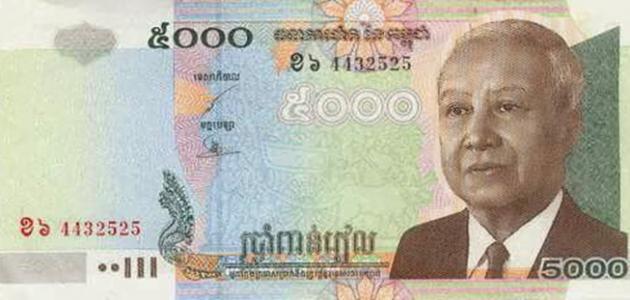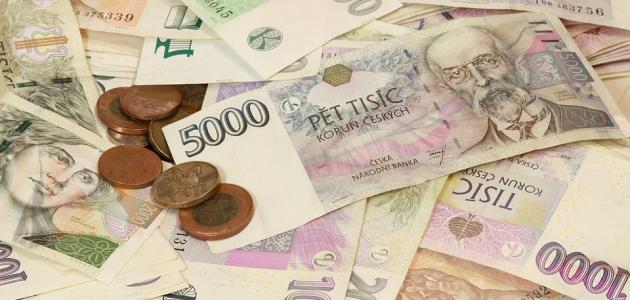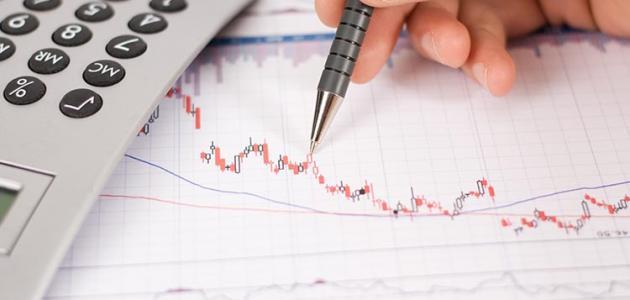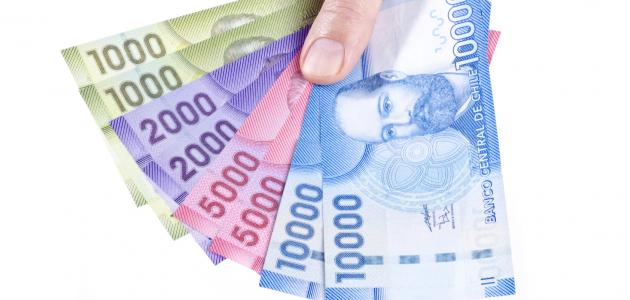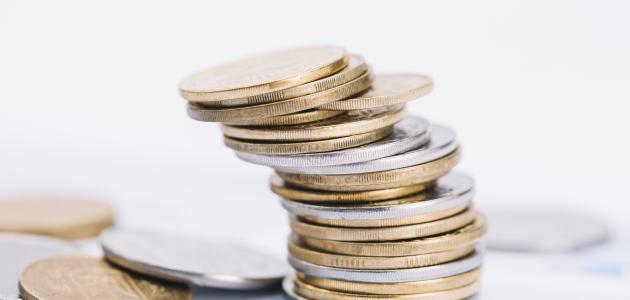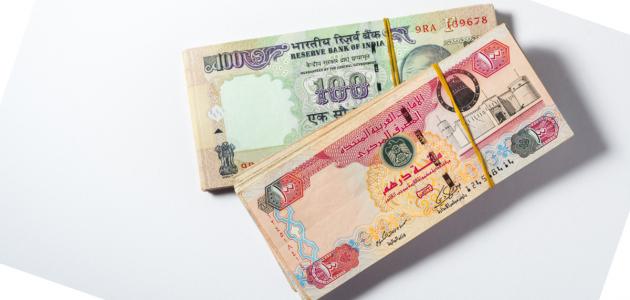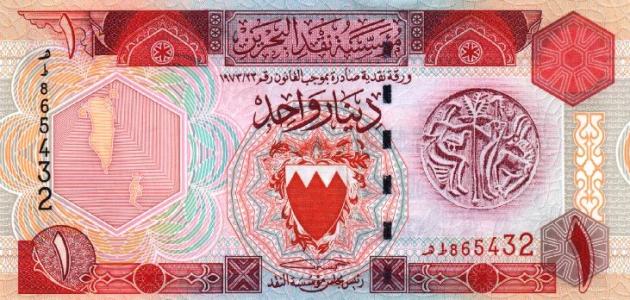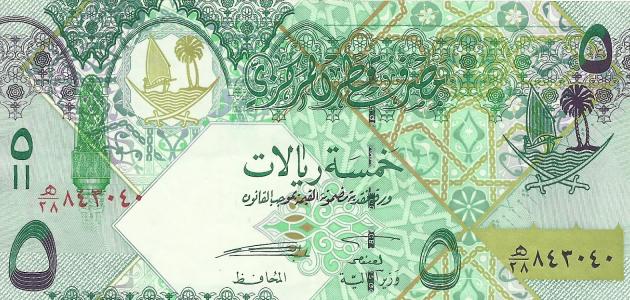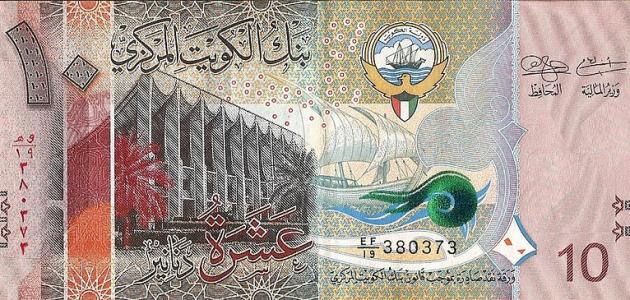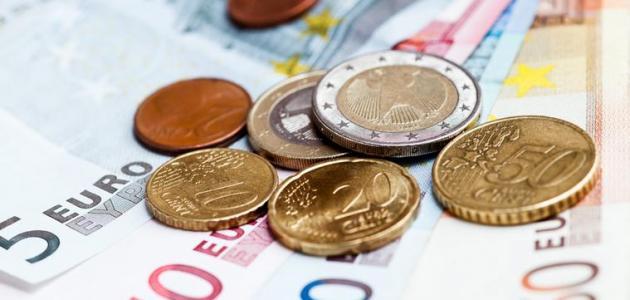Currency of the Kingdom of Cambodia
Cambodia's currency is known as the Cambodian Riel (in English: Cambodian Riel), and is symbolized by the symbol (KHR). Each Cambodian Riyal is divided into 100 sen, and the Cambodian Riyal is issued in the form of nine common denominations: the 100 riyal denomination, the 200 riyal denomination, and the 500 denomination. Riyal, 1,000 riyal note, 2,000 riyal note, 10,000 riyal note, 20,000 riyal note, 50,000 riyal note, and 100,000 riyal note. It should be noted that foreign currencies are approved in Cambodia. such as the US dollar; Which is considered a secondary currency accepted throughout Cambodia, in addition to the Thai baht, which is an approved currency in the Cambodian cities located on the Cambodian-Thai border in the north and west of the country, and thus there are three approved currencies in Cambodia.
Coins
Four denominations of coins were issued by the National Bank of Cambodia, on March 25, 1995 AD. They are made of stainless steel, and the amount of the coin appears on its face in Khmer and English. As for its other side, it differs according to the denomination of the currency as follows:
- 50 riyal category: The reverse side of the coin features an image of the Cambodian Independence Monument.
- 100 riyal category: The reverse side of the coin shows an image of the temple complex of Angkor Wat.
- 200 riyal category: Its reverse side shows an image of the Cambodian Constitution placed on a podium.
- 500 riyal category: The reverse side shows the Cambodian coat of arms, and what distinguishes this coin from others is that its core is made of stainless steel, surrounded by an alloy made of copper, nickel, and aluminum.
Paper currencies
Nine denominations of banknotes were issued by the National Bank of Cambodia, and its first edition was issued on April 25, 1995. Cambodian banknotes are distinguished by their design that reflects images of Cambodian figures and cultural and historical landmarks. Below is a breakdown of each denomination:
Read also:What is the currency of London?- 50 riyals: This coin was issued in its current form in 2002 AD, and on one of its sides appears the Hindu temple of Banteay Srei. Which is 25 km away from the Cambodian temple complex, Angkor Wat, which dates back to the tenth century AD, and on its reverse side appears an image of a water dam. It should be noted that this category is one of the categories that is rarely circulated among the population.
- 100 riyals: This category is distinguished by its orange color in its most recent edition, which was issued in 2015 AD, and on one of its faces appears a depiction of the Buddhist deity Naga, who appears as a snake, in addition to a picture of a statue of Buddha, and a picture of King Father Norodom Sihanouk as a young man, and on its other side appears a silver-colored Buddhist pagoda building; Which is considered part of the royal palace; Which is located next to the river of the capital, Phnom Penh.
- 200 riyals: The design of this coin has not been updated since 1995 AD. As for its design, an image representing the gates of irrigation dams in Cambodia and the Cambodian coat of arms appears on one side, and images representing Buddhist religious symbols appear on its other side.
- 500 riyals: This currency was issued in its current form in 2015 AD, and on one side appears the image of the Naga Buddhist deities, the Cambodian coat of arms, in addition to the image of King Norodom Sihamoni, and on its other side appears a picture of a Cambodian city and the bridges of the Kizuna Road built on the Mekong River.
- 1,000 riyals: This coin was issued in its current form in 2013 AD, and on one of its sides appears a picture of the head of the Buddhist deity Naga, and a picture of King Norodom Sihanouk, and on its other side appears a picture of the throne room in the royal palace, in addition to a picture of a legendary creature in Buddhist beliefs called the canary (in English: kinnari). , which appears in the form of half human and half bird.
- 2,000 riyals: This coin was issued in its current form in 2013 AD, and on one side appears an image of the head of the Buddhist deity Naga, and a picture of King Norodom Sihanouk, and on its other side appears a picture of the throne room in the royal palace, in addition to an image of the mythical creature the canary.
- 5,000 riyals: This denomination was issued in its current form in 2001 AD, and on one side appears an image of the head of the gods Naga, and King Sihanouk wearing a beret, and on the other side appears an image of the Kampong Kdeh Bridge in Siem Reap Province.
- 10,000 riyals: The most recent edition of this category was issued in 2015, and on one side appears a portrait of King Sihanouk, while on the other side appears a picture of the ruins of Preah Khan Temple located in the garden of the Angkor Museum.
- 20,000 riyals: This coin was issued in its current form in 2008 AD, and on one side appears a picture of King Norodom Sihamoni, and a picture of the Angkor Wat temple complex, and on its other side four faces representing Buddhist gods appear.
- 50,000 riyals: This currency was issued in its current form in 2014 AD, and a picture of King Sihanouk appears on one side, and a picture of ancient antiquities and a statue in the form of a small elephant appears on the other side. It is worth noting that this category is one of the categories that is rarely circulated among the population.
- 100,000 riyals: The most recent version of this coin was issued in 2013, and a picture of King Sihanouk and his wife, Queen Norodom Monineith, appears on both sides of this coin.
The exchange rate of the Kingdom of Cambodia's currency
The National Bank of Cambodia is interested in determining the exchange rate for the Cambodian riyal. It is considered one of the basic tools used in the monetary policy applied by the bank. In order to contribute to achieving stability in the general average of prices, and to follow the foreign exchange market and its impact on the exchange rate of the Cambodian riyal, the National Bank of Cambodia relies in determining the currency exchange rate on the following procedures:
Read also:What is the currency of Abu Dhabi?- Appointing a special committee to determine exchange rates linked to official currencies. This committee often includes employees from official departments, such as: the Organization of International Cooperation, economic research, statistics, and banking operations.
- The committee holds a morning meeting; In order to determine and choose the legal exchange rate; By analyzing and studying all external and internal data, the exchange rate is subsequently published daily after obtaining the approval of the Director General of the National Bank.
- If the exchange rate is unstable and far from its specified range, the committee may hold an urgent meeting. With the aim of discussing modern approaches and strategies that will be applied to study the exchange rate.
History of the currency of the Kingdom of Cambodia
The use of cash coins in Cambodia began in ancient times. Specifically in the year 1847 AD, when the first coins were issued using a currency printing machine, and in the year 1853 AD a new machine was purchased from England for use in printing monetary currencies, and this currency was called Prak Daung or Prasath in the local dialect to indicate the name of the king. As for the Riyal currency It dates back to the twentieth century AD. It is believed that its name is derived from the Portuguese and Spanish languages, and some believe that the origin of the word “riyal” is taken from the Mexican real currency that was used by merchants in Malaysia, China, and India in the mid-nineteenth century. It should be noted that the meaning of the word “riyal” is small fish in the Cambodian Khmer language.
Read also:What was the currency of Greece before the euro?The riyal appeared for the first time in 1953 AD when Cambodia gained independence from France. The Institute of Missions of Cambodia, Laos and Vietnam issued financial notes to evaluate the riyal currency, and thus the riyal became the official currency in the colony of French Indochina between the years 1885 AD and 1952 AD, and this version of the riyal continued in circulation until 1975 AD, and another copy of the riyal was issued with a new financial value in the year 1980 AD. As for foreign currencies, some of them spread in Cambodia starting in 1980 AD, such as the US dollar, which is considered an alternative currency in most cities of Cambodia at the present time.
The amount of 4,100 Cambodian riyals is equivalent to one dollar, and one of the most important reasons that led to the widespread spread of the dollar in Cambodia is the presence of the United Nations Transitional Authority in the country in the eighties and nineties of the last century. Which led to dollarization in Cambodia; That is, the process of converting from the approved currency to the dollar, and another foreign currency is dealt with in Cambodia, which is the Thai baht, in Cambodian cities that border Thailand, such as the city of Battambang and the city of Krung Pailin.
National Bank of Cambodia
The National Bank of Cambodia was established in December 1954, and was reopened in 1979. The bank is located in the Cambodian capital, Phnom Penh, and the bank is spread out in twenty-one branches in various cities of Cambodia. It is worth noting that Cambodians call it the Red Bank, because its building is built Made of red brick, the National Bank is considered the central bank in Cambodia. That is, it represents the financial authority and the supervisory authority, and issuing and printing the Cambodian riyal is its main mission as a financial authority, using a policy that maintains price stability in cooperation with the royal government with the aim of developing the Cambodian economy. As for it being a supervisory authority, it is responsible for issuing and withdrawing licenses for opening banks and financial institutions, in addition to issuing periodic economic and financial analyses, issuing financial bulletins, supervising the country’s payment systems, approving the balance of payments, and participating in managing claims for foreign debts.
